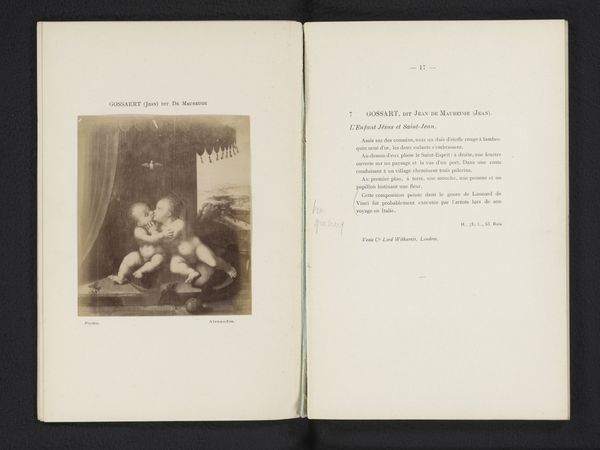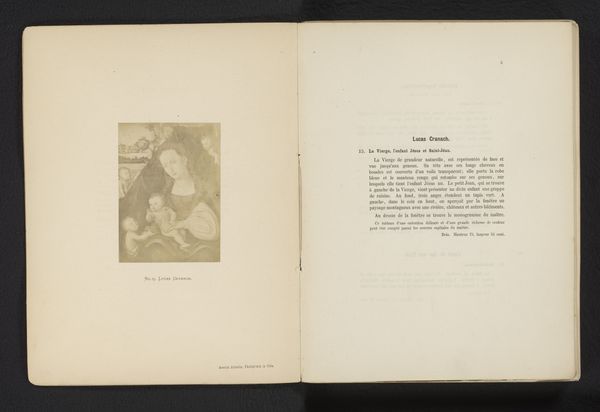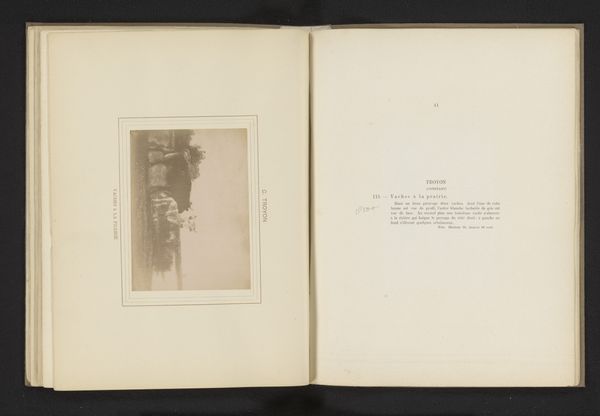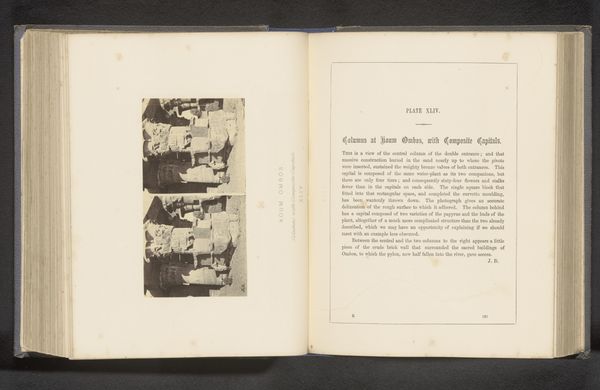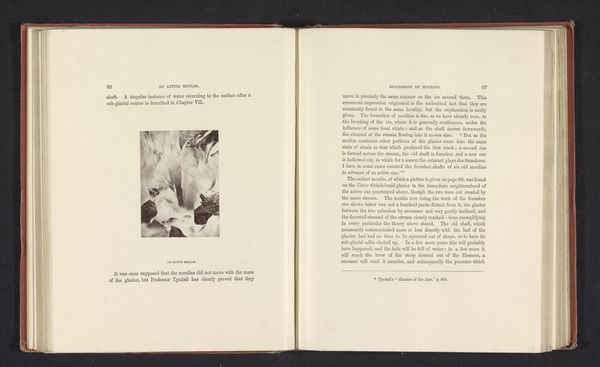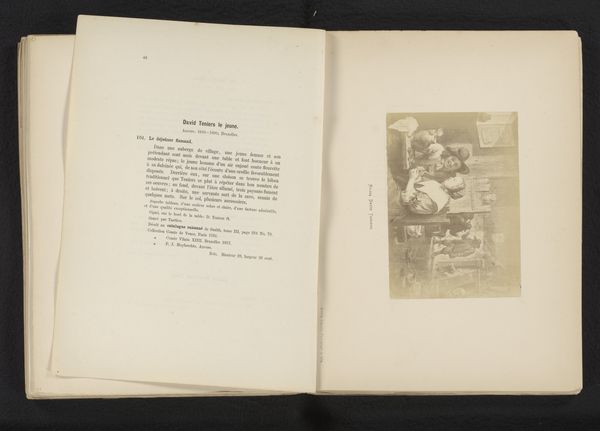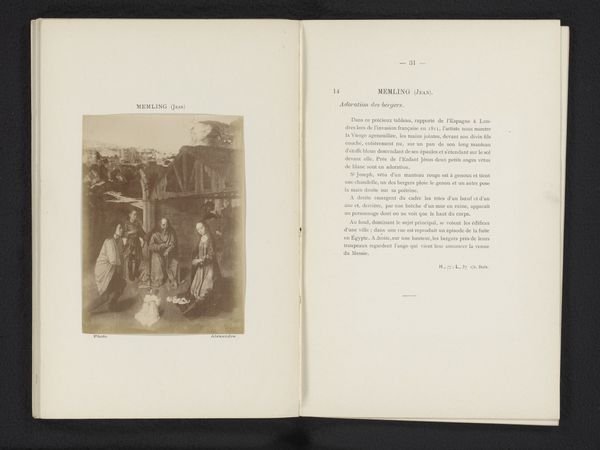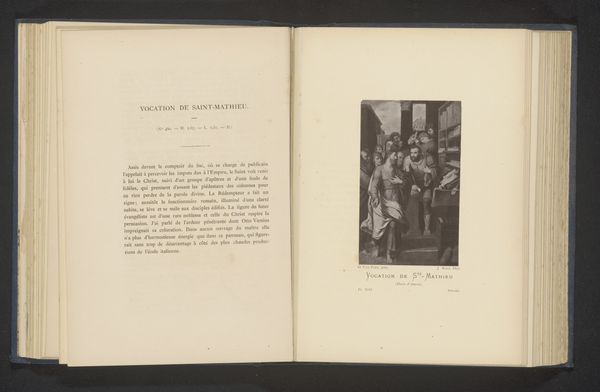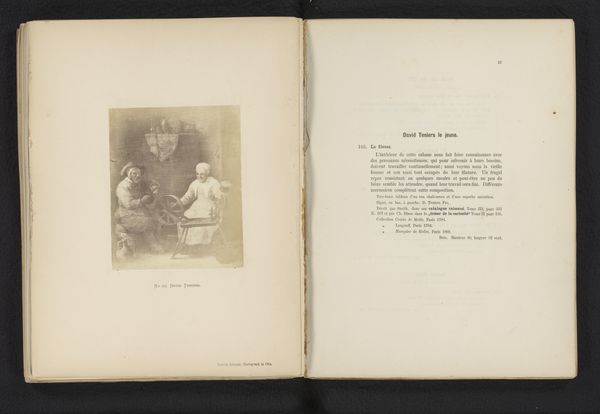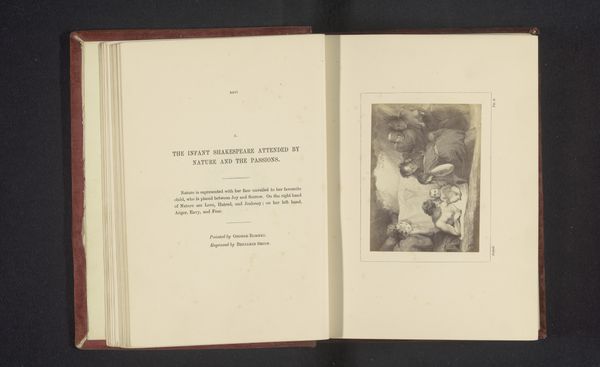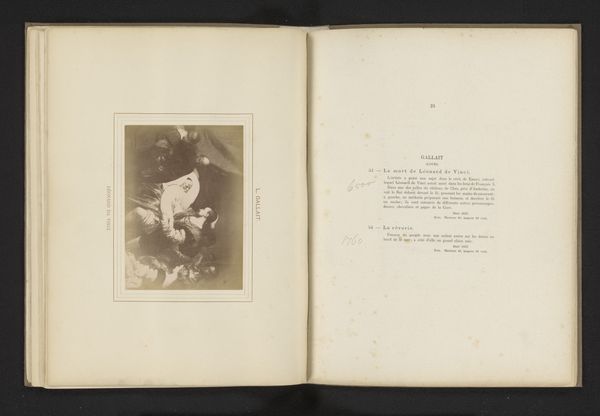
Fotoreproductie van een schilderij van Maria Magdalena in een landschap door Adriaen Isenbrant before 1883
0:00
0:00
print, photography, gelatin-silver-print
# print
#
11_renaissance
#
photography
#
gelatin-silver-print
#
paper medium
Dimensions: height 127 mm, width 103 mm
Copyright: Rijks Museum: Open Domain
Editor: This photograph, taken by Alexandre, captures Adriaen Isenbrant's painting of Maria Magdalena in a landscape sometime before 1883. It’s a gelatin-silver print, giving it a sort of faded, antique feel. It almost feels like I’m looking at something removed and precious through a veil of time. What can you tell me about this image? Curator: It's important to remember that we're not looking at the original painting itself, but a photograph of it, situated within a specific cultural and institutional context. These photographic reproductions played a crucial role in democratizing access to art, particularly during the late 19th century. What impact would such access have? Editor: I guess that these photographs made artworks more widely available for study, collecting, and potentially even altering public taste. Curator: Precisely. Think about the politics of imagery at play here. Photography, as a relatively new medium, was seen as more "objective" than, say, an engraving. But how might that perceived objectivity actually shape how the artwork was viewed and understood by the public? Could the very act of reproducing the painting distort or re-frame its message? Editor: It makes you think about the difference between seeing a work of art in a museum and seeing its representation in a mass-produced photograph. It's like a filter changing the work. Curator: Exactly! The framing, the light and shadows inherent in the photographic process - it all influences how we perceive this "copy" of Isenbrant's original. These photographs were powerful tools in shaping and disseminating art historical narratives. What might that say about power structures in society and the function of museums? Editor: It puts the artwork within a broader social history. Thinking about this image in that way really shifted my perspective! Curator: Mine too. Thank you for guiding me back to the reproduction and the art market in a period that continues to fascinate me.
Comments
No comments
Be the first to comment and join the conversation on the ultimate creative platform.
